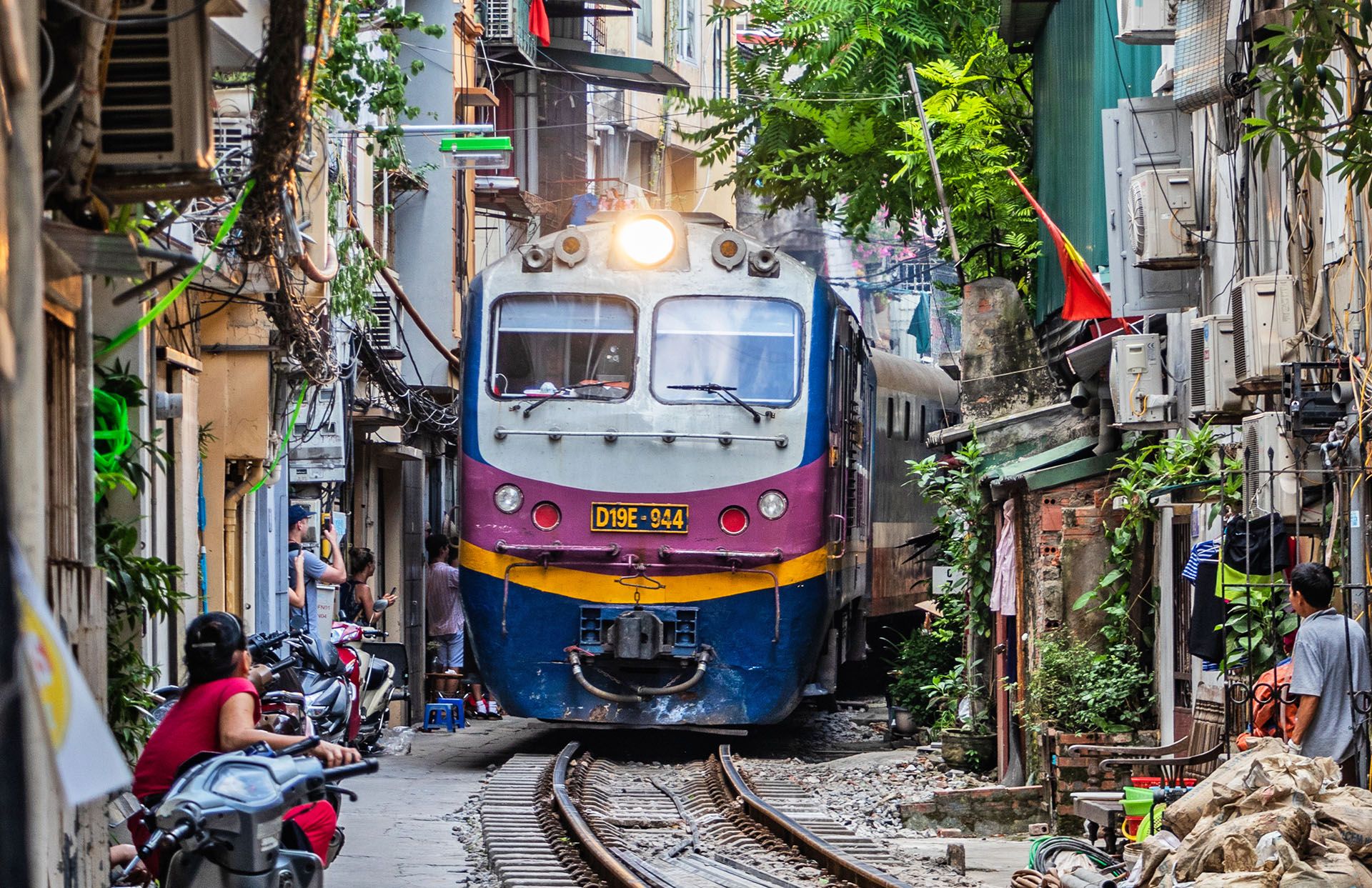Important cities and stops
After a few days in Hoi An – tailors, temples, and tamarind fish – I bus back to Danang and board the next night train to Nha Trang. The station’s packed and the train’s late, but I manage to wedge myself in near the front. This time, the cabin’s filthy – sunflower shells everywhere, crumpled grey sheets, and that unmistakable whiff of cigarette smoke. I’m glad I brought my own liner.
The train pulls in at Nha Trang just after 7 am. Once a rest stop for US soldiers, now a beach resort bursting with karaoke bars and Russian tour groups, it’s chaotic but fun. I visit the quirky Yersin Museum and climb the 150 steps to the Long Son Pagoda’s giant white Buddha, then nap on the beach until it’s time to catch the final leg.
These coastal stops – Hoi An, Nha Trang, even Danang’s gritty charm – are more than just pit stops. They’re among the best places to visit in Vietnam, especially if you’re weaving your way south by train. The overnight ride to Ho Chi Minh is long – over nine hours – but by now I’ve got a rhythm. Sleep, coffee, stare out the window. It’s stiflingly hot when I arrive. Hanoi’s cold mist feels a world away.
The city is buzzing, motorbikes everywhere, and I’m already nostalgic for the click–clack of the rails.
Alternatives for the Hanoi to Ho Chi Minh City train
After almost 40 hours on rails, I can confirm – this train journey is not for everyone. It’s slow, loud, and occasionally grim. But if you’ve got the time, it shows you a version of Vietnam no plane window ever could.
That said, there are faster options. Flying from Hanoi to Ho Chi Minh City takes just over 2 hours and costs around the same as a soft sleeper if you book early. Buses – especially open-tour ones – are cheaper but less comfortable, and more chaotic on long routes.
There’s also Vietnam by motorbike route – the classic “top to bottom” ride that hundreds of travelers do each year. It’s thrilling, dangerous, and unforgettable – but definitely not restful.
Still, there’s something about the night train. Watching the country unfold while you’re halfway between sleep and sunrise, rocking gently along the tracks – it sticks with you.
For me, after arriving in Ho Chi Minh, I drop my bags, find a streetside café, and order a syrupy-sweet cà phê sữa đá. I’ve crossed Vietnam by rail – and I’m finally ready for a proper bed.
Explore more of Vietnam with the Rough Guide to Vietnam, and discover neighbouring countries with our budget guide to Southeast Asia.









